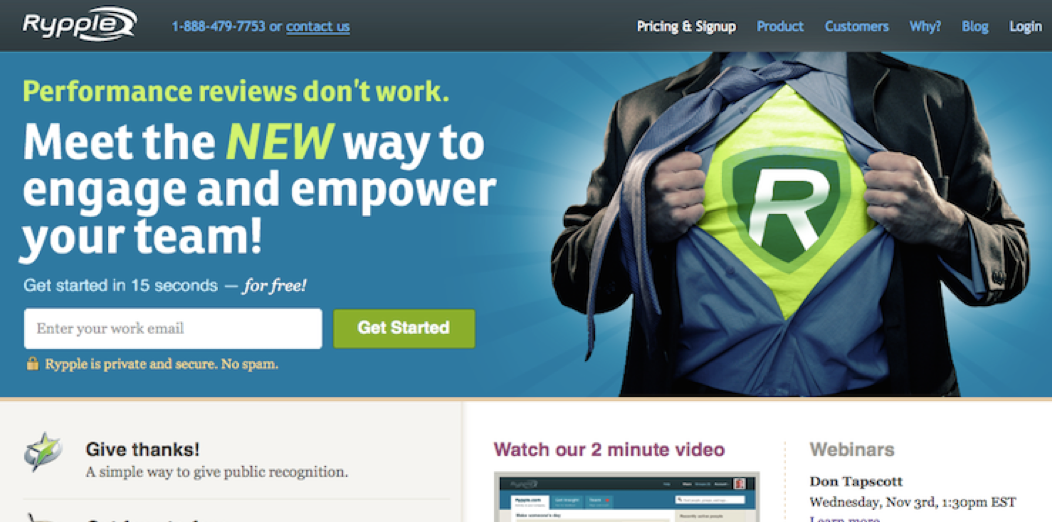Three principles scientifically proven to help your message break through your customer’s armor
“What does your company do?”
Such a simple question, yet one many of us are challenged to answer in a succinct, well-differentiated, and compelling way. While the response you’re likely after is one where the other person leans in and says “Oh wow! Really? Tell me more!”. Most of the time we’re left to settle for a patronizing, “Oh that’s nice” or worse, the counterfeit “Interesting!”.
It’s too bad that most of us mess up the easiest and most important part of our sales playbook!
Especially because connecting with modern buyers has never been more important (and more challenging).
With so many solutions flooding the market buyers have become highly protective of their time and attention. With unprecedented access to information, they have little interest in investing in your sales process, leaving most vendors to drown in the “sea of sameness”. According to research from the Bridge Group:
- the number of outreach attempts baked into the average sales sequence has more than doubled over the past ten years
- the number of quality conversations per sales rep per day has fallen by 45% since 2014
- the average experience required of a new business development rep is 60% less than what it was in 2010.

Average sales outreach attempts over time (Source: The Bridge Group Sales Development Models, Metrics and Compensation Research 2023)

Average years of experience required at hire (Source: The Bridge Group Sales Development Models, Metrics and Compensation Research 2023)
But there is hope! When it comes to getting your message to not only be heard but deeply resonate, the science of persuasion can help modern sellers operate with armor-piercing efficiency to convert more customers. The secret is leveraging a principle known as processing fluency; the ease with which information is processed.
Here are three principles you can use to help your message quickly penetrate the consciousness of your customers:
1. Polarization: who is your enemy?
High-impact messages are often ones that create an instantaneously visceral and emotional reaction in the mind of your customer. Polarizing messages are no exception because they present an argument that your customer will instantaneously position themselves on one side of. For example, at my third startup, Rypple, we developed a modern performance management solution focused on providing employees with ongoing feedback, coaching, and recognition. The enemy, the annual performance review; a process that 80% of employees used the word “hate” to describe. Our polarizing message was simple. Performance reviews don’t work!
Now, if you were a traditional HR professional who believed that performance reviews were a good, yet misunderstood, tool, you may not have liked that message very much. But that was the point! Our target audience wasn’t traditional HR professionals. It was the more progressive companies and employees who were looking for a better solution. Picking an enemy and invoking it in a message to intentionally polarize our audience was the goal. Not only did our message resonate quickly and clearly, but those who responded to it were very keen to learn more about our approach.
Note: while leading with your customer’s clear enemy or pain can be very powerful, sometimes the best enemies are the hidden ones your customer didn’t even realize they had! Try to incorporate those into your pitch as well for added emotional impact.
Bonus Videos: Messaging Made Easy
2. Juxtaposition: what product, solution, or status quo process looks silly by comparison?
At just over five foot seven inches tall, Tom Cruise is decidedly shorter than most leading men in Hollywood. Yet, many moviegoers are surprised when they learn that for the first time. That’s because Cruise is rarely photographed standing beside taller actors. An example where the lack of comparison results in an inaccurate perception. On the flip side, juxtaposition, the act of comparing two things placed closely together to produce a contrasting effect, can have a huge impact on delivering your message with instant clarity.
Consider the two signs below. Both are designed to encourage pet owners to pick up after their dogs. However, one uses juxtaposition to drive rapid mental clarity and behavior change.

In the case of the new-age employee feedback tool, Rypple, mentioned in the previous section, juxtaposition, and polarization were used together to quickly drive the message home. For example, consider the website homepage below (which no longer exists as the company was acquired in 2012). If all the copy said was “Meet the NEW way to engage and empower your team!” the reader might be left wondering, “Why do I need a new way?” or “What was the old way?”. By juxtaposing the tagline with the polarizing statement, “Performance reviews don’t work”, the reader gains immediate clarity.

The power of juxtaposition is also alive and well in another one of my guilty pleasures, the modern infomercial! For example, have you ever noticed that when you’re watching an infomercial for a new kitchen gadget, the argument to purchase it all of a sudden becomes more compelling when they start listing all of the older (clunky, expensive, hard-to-clean) appliances their gadget can replace? Juxtaposition.
In the realm of modern selling, one of the best ways to create contrast is to use data to drive your message home. The video below will give you a sense of how to do this. But beware! Not all data has the same emotional impact. If your business case numbers are falling flat, check out this post for one explanation as to why.
Bonus Videos: How to Use Data to Create Contrast the Right Way
3. Conviction: what does your company believe?
Conviction is a powerful force in the science of persuasion. Toastmasters international speaker Mohammed Qahtani masterfully employed this tactic in his 2015 World Championship winning talk, The Power of Words. In it, he demonstrates how words, when said and articulated in the right way, can change someone’s mind in a rapid and compelling way. High-conviction messages have massive persuasive power because they are fundamentally rooted in emotion. And modern neuroscience has proven that humans are emotional creatures first and foremost. This means that a message that promotes emotional alignment with our target audience can be much more persuasive than a logical message touting the technical merits of your solution. And the messages that often invoke the greatest and quickest emotional responses are the ones rooted in beliefs.
In his book, Start With Why, author Simon Sinek, asserts that customers don’t buy what you do, they buy why you do it. That’s why market leaders, lead first and foremost with what they believe. For example, when it came to positioning the value of their new mobile app, cloud computing giant Salesforce didn’t lead with a breakdown of the app’s features and capabilities. Rather, they led with a simple message of “We believe you should be able to run your business from your phone”. By the same token, Tesla and SpaceX founder, Elon Musk, doesn’t sell products by leading with their technical merits (although those may come later). He talks about his company’s vision for the future and the fate of our planet, with which his products align. While the products and services may change over time, the underlying beliefs remain.
Bonus Video: Harnessing the Massive Conversion Power of Conviction
Explaining what your company does in a succinct, well-differentiated, and compelling way has never been more important or more difficult. If you find yourself drowning in the sea of sameness, the trick is turning your message into an armor-piercing bullet by using the power of persuasive science to reformulating your pitch. The principles, of polarization, juxtaposition, and conviction make great allies that will not only help your message resonate more quickly and deeply with your audience, but can be easily remembered and delivered with high emotional intent by your customer-facing teams.
We promise never to send you junk or share your email! Just helpful sales insights.














Leave a Reply
Want to join the discussion?Feel free to contribute!